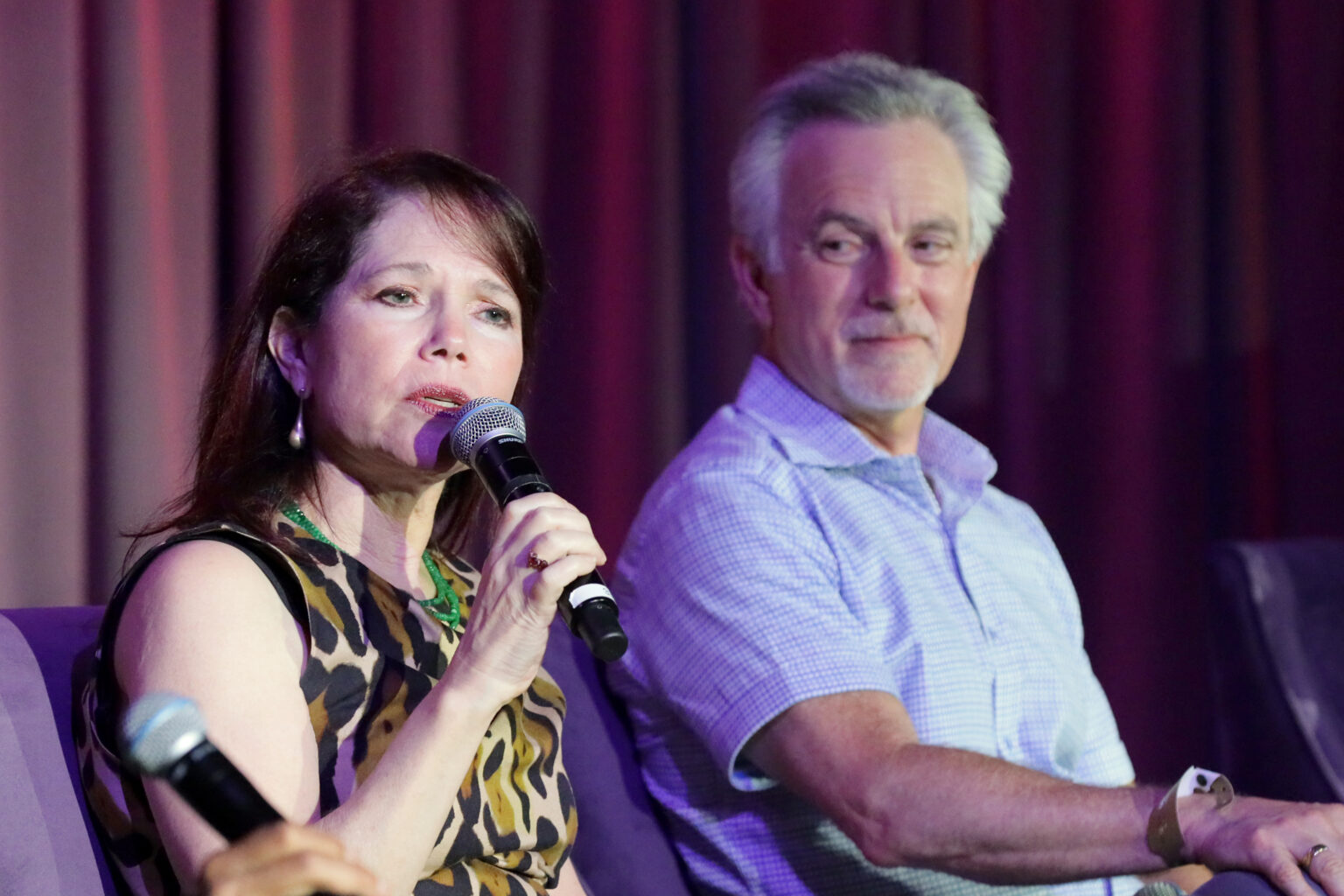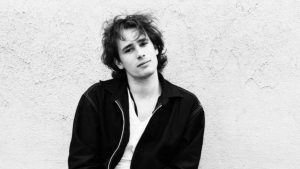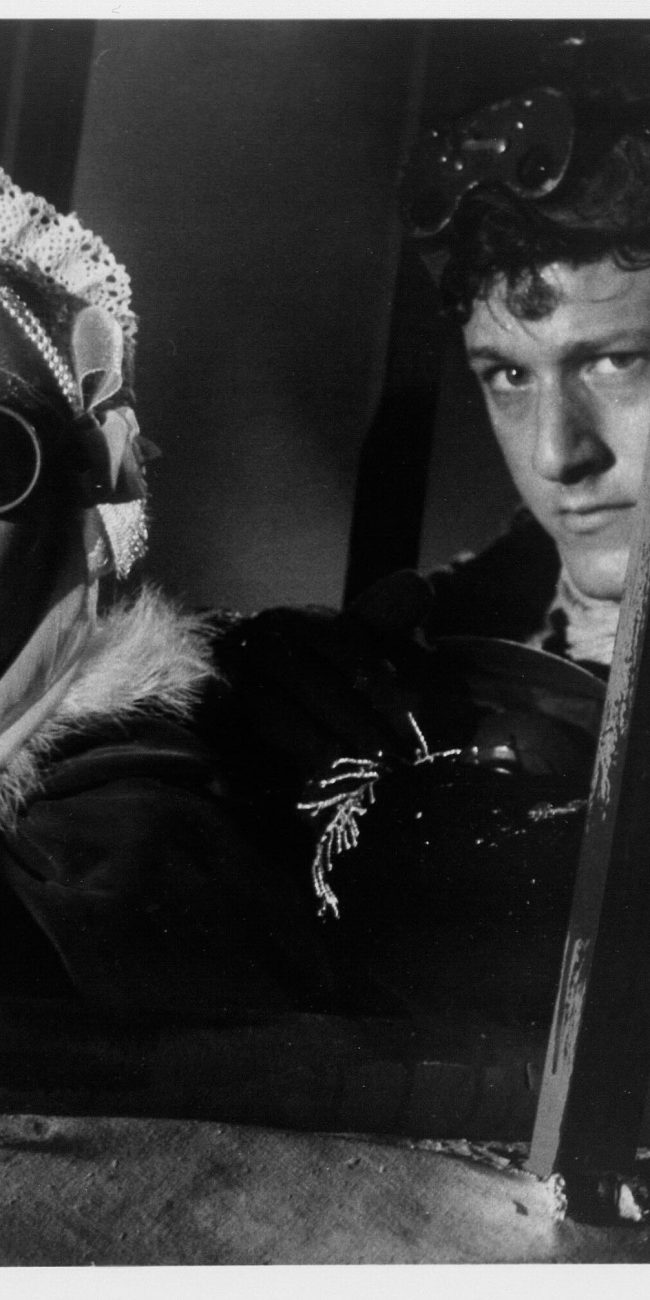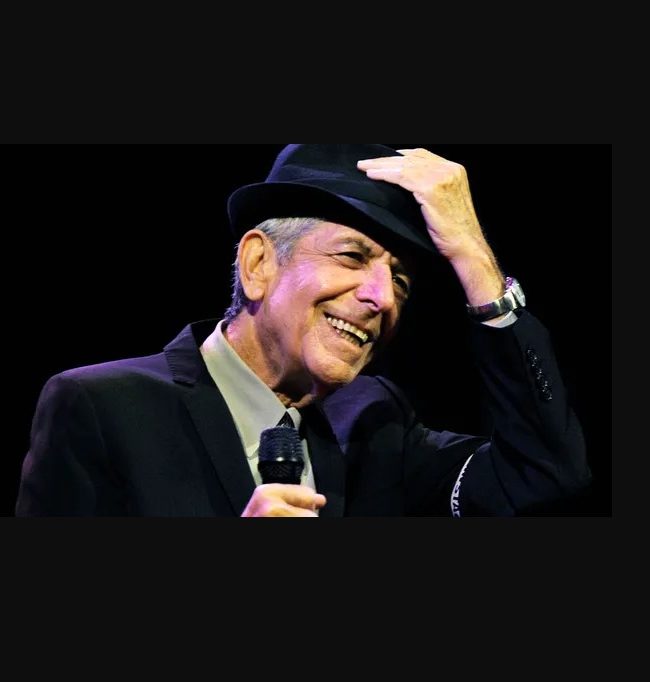A Conversation with Daniel Geller & Dayna Goldfine (HALLELUJAH: LEONARD COHEN, A JOURNEY, A SONG) Part 1

Your faith was strong but you needed proof
You saw her bathing on the roof
Her beauty and the moonlight overthrew her
She tied you to a kitchen chair*
She broke your throne, and she cut your hair
And from your lips she drew the Hallelujah
For as long as I have lived in the Bay Area, I’ve known Daniel Geller and Dayna Goldfine. This, on its own, is relatively unremarkable. Essentially anyone in San Francisco who is involved in filmmaking has undoubtedly crossed their path at some point. Not only are they immensely talented, they’re damn fine people to be around (and they make great films as well). Their first collaboration in 1989 was an enlightening profile, Isadora Duncan: Movement from the Soul. This was followed by a trio of youth-education-related films: Frosh: Nine Months in a Freshman Dorm (1994) and its follow-up, Now and Then: From Frosh to Seniors (1999), with the similarly-themed Kids of Survival (1996) in-between. Their subsequent quartet of releases amplified the extraordinary characteristics of these earlier four, returning to dance with the exquisite Ballets Russes (2005), then the Silicon Valley start-up-centric Something Ventured (2011), the unclassifiab-ly fascinating The Galapagos Affair: Satan Came to Eden (2013) and now their latest, Hallelujah: Leonard Cohen, a Journey, a Song (2021).
The Cohen chronicles had its dual-premieres at Venice and Telluride last September. Admittedly, much as I am the target audience for such things, it wasn’t the film I was most excited to see at the latter gathering (and my assessment of that film already appears in these pages nor was it the music-themed documentary in Colorado that caught me by most pleasant surprise (as that’d be D.L. Anderson and Matt Durning’s exhilarating Stay Prayed Up ). A nearly-two-hour journey through the life of Cohen by way of his unlikeliest hit would probably fall far short of the target in the hands of anyone other than Goldfine and Geller. It is, indeed, a delicate balancing act to take a song—even a song as fantastic as ‘Hallelujah’—to the point of oversaturation and still make a fabulous documentary about the songwriter and his work. They’ve done it. Now you can see it in cinemas across the U.S. and around the world (and, if you’d like, you could also read all about it below and elsewhere).
What follows is a companion-piece to a related article in the San Francisco Examiner. That backgrounder review includes three quotes from our two-hour conversation. Here, below, is an edit of the rest.
Hammer to Nail: Had you read “The Holy or the Broken” initially? How did you first encounter the book?
Dayna Goldfine: It is a long story. Basically, it was the summer after we had finished Galapagos [Affair]. We were having dinner with David Thomson and we were just starting to be open to the idea of…
HtN: Something next?
Goldfine: Exactly. David said, “Have you ever considered doing a documentary about a song?” It didn’t really strike a chord for either of us at the time. Then a few minutes later into the conversation, I remembered seeing Leonard Cohen at the Paramount in Oakland doing his whole show. One of the most memorable pieces of that show was his performance of ‘Hallelujah’.
HtN: Was that the first of those tours?
Dan Geller: We went to both.
Goldfine: The first, we didn’t know anything about him. Obviously, we knew who he was. A friend brought us and it was such a spectacular experience that, when he came back through [the Bay Area], we got better seats…
HtN: I’m surprised that I didn’t run into you there.
Goldfine: Weren’t those shows amazing?
HtN: It was truly incredible.
Geller: As he says in the movie, he had this unresolved sense about performance. I think, in part, he felt that he had never really performed to the level of the songs as a concert artist. I don’t think he ever expected that those tours would expand and become wildly popular.
HtN: It didn’t seem as if anyone in the band believed that the tour would become quite that successful. “Let’s do this. This’ll be nice.” Then it became its own thing.
Goldfine: Sharon [Robinson, a long-time Cohen collaborator and one of the back-up singers on the tour] says in the film, “We booked it in a really small auditorium because no one knew what was going to happen.” Anyway, the next morning, I kept thinking about the song and that conversation with David.
HtN: Specifically, ‘Hallelujah’?
Goldfine: Yes, and Leonard, in general. I was thinking about how funny it was that I’d said to David, “That seems like a stupid idea,” basically. Dan or I typed ‘Hallelujah’ into Google and up came Alan Light’s book. It had just been written a few years before that. We each read it and our thought was, “If an author can pull a 250‑page book together about the song, then we probably could make a documentary about it.” We just didn’t know exactly how it would unfold. As soon as we finished reading the book, we reached out to Alan on Facebook and asked, “You don’t know us but have you ever been approached by a documentary filmmaker who was interested in turning your book into a movie?” He is an incredible responder. He responds no matter the time of day within a few minutes. He wrote back right away, “Yes, at least three people have. They’d been really gung‑ho. At the end of the day, they decided not to do it.”
HtN: Interesting.
Goldfine: “You guys can do it if you want but I’ll tell you the three reasons why they’ve ultimately backed out.” It was both reassuring to know that other people had the same idea and it was a little bit, “Oh, why didn’t they do it?”
Geller: As Alan said, one would be that we couldn’t get the rights to the song in any kind of affordable way.
HtN: Which is a substantial challenge.
Geller: Another was that there would be no way that Leonard would agree to sit for an interview. That was a non‑starter for a lot of people. I think there also was the sense that, “Well, could this one song really, ultimately, hold an entire movie?”
Goldfine: Basically, our response to those three reasons were, obviously, we don’t buy into the concept of it not being interesting enough. To me, that was throwing down the gauntlet. “Of course, we can make a film that is interesting.”
HtN: “We can make the impossible possible.”
[laughter]
Goldfine: That is part of the challenge, right? The second one was Leonard not sitting for an interview. Even at that early stage, we both felt like that wasn’t important.
Geller: With even a simple web search you could find loads and loads of clips throughout his entire career.
HtN: Even before his recording career began, there is Ladies and Gentlemen… Mr. Leonard Cohen. There is so much great material from which to draw.
Goldfine: Exactly

Jeff Buckley.
Geller: Alan’s book became foundational to us. It wasn’t what we decided the movie, ultimately, was going to be because we wanted to braid Leonard’s entire life and his spiritual quest through that song. Alan’s book is a more specific, a different slice and angle.
Goldfine: It is more focused on Jeff [Buckley], too.
HtN: I was about to say the same thing.
Geller: That allowed us a lot of leeway to begin to pull material, right back into Ladies and Gentleman... through the middle of his career to the late career. We can pull everything and not feel constrained. That wasn’t going to be a problem. I mean, it would have been nice [to have an interview with Cohen] but it was not a problem.
HtN: At what point in the process did you contact [Lary] “Ratso” [Sloman]? When did you have the footage which opens the film?
Geller: That footage was sitting in one of those the Iron Mountain storage places in Pennsylvania. We had gone to Sony [Music Entertainment’s] Legacy [Recordings]…
Goldfine: Ratso told us that it existed.
Geller: The Sony Legacy archivist there was very helpful and Greg Linn [SVP of Marketing and Content] at Legacy was very helpful. They were intrigued by the project. That is where the footage came from. Ratso was one of the very first interviews.
Goldfine: Once we started down the path… The third issue was, “Sony Publishing won’t give you the rights for an amount that you can afford.” We thought, “Okay, that is the one that would totally blow this apart,” because, obviously, we needed the rights. We negotiated with them for a long time. In the process of starting that negotiation, Alan Light suggested that we talked to Rachel Fox, who ultimately became our music supervisor. Rachel worked with Hal Willner.
Geller: The spider web begins to expand.
Goldfine: Rachel knew everyone. Early on, we had heard about Ratso (although he doesn’t appear in Alan’s book). We asked Rachel, “Oh, do you know Ratso Sloman?” She said, “He is one of Hal’s best friends! Do you want to meet him? Let’s have dinner together when you’re in New York next week.”
HtN: This is somewhat similar to your process on other films. In The Galapagos Affair, you turn one direction and suddenly all of these other things crawl out from under a rock.
Geller: That is the fun of it! Because these people lead to other people and they lead to other people. They all want to share their own slice of the bigger story. Ratso agreed right away. He’s fabulous. Just inimitable.
HtN: I can imagine.
Goldfine: We ended up having dinner with him a few times because it took us two years to clear the rights. In that time period, we were meeting Hal and Rachel and then Hal would introduce us to someone.
Geller: By the way, just a quick step backward: Alan Light told us the best approach to try to get Leonard to give us his tacit blessing to approve the project. With synchronization rights, he could stop everything or he could refuse to let Sony issue a license.
Goldfine: Because he owned half of his rights.
Geller: What Alan said was that we should go through Robert Kory, his manager [at the time, currently Trustee of the Cohen Family Trust], to ask for [Cohen’s] blessing, basically. That happened very quickly, even though Alan had said that it could take a long time.
HtN: That was right before his 80th birthday?
Goldfine: Right. We contacted Alan in August of 2014 and that was when he told us those three reasons. We started talking together and we said, “We’re ready. We want to move forward with this,” and he said’, “Well, here is Leonard’s manager’s contact info.” Then we got in touch with Robert. Robert, like Alan, is an incredibly quick responder. Within five minutes, he replied, “I like your approach.” Mostly, what he was really impressed by was that we’d said we didn’t need an interview. I think we were the only people who ever wrote and said that we didn’t need an interview. Then, within a couple of weeks, he’d shown Leonard our material. Leonard looked at our website and he said, “Yes, I’ll give him them the blessing.”
Geller: There were other people who’d had ideas about a ‘Hallelujah’ movie but they said, “No.” They said yes to us because I think Leonard was intrigued by our work and by what we were proposing to do with the song and his life. Once we had that, then we could go to Sony and start talking about [music licensing]. The first part was quick but then it took a year-and-a-half of back-and-forth to get to something that an independent film could support as far as a music license. As soon as we had that license, in August of 2016, that was when we jumped-in and started filming.
Goldfine: Cohen passed away around the time that we started filming [at the beginning of November, 2016]. All of those later concerts came from Robert once he saw the first cut of the film.
Geller: We were building a trust with each other. It was always understood that there was material out there that we would need but some of that material is incredibly rarefied. As the trust built up, back-and-forth, those assets became available to us and enriched the movie.
Goldfine: The concert, his very last show in Auckland that opens the film…we didn’t even know that footage existed until about three months before we’d finished [editing]. Basically, the more [Robert] trusted us, the more he’d go, “You know who I should introduce you to? I should introduce you to the guy who was in charge of coordinating all of the video production for all of the concerts that Leonard performed in those five years.”
Geller: All of that was sitting on various formats of videotape and digital media stored at the Iron Mountain facilities. There was a larger project afoot (which began after Leonard passed away) to begin to bring in as much of that material—scattered as it was—to digitize it, organize it and put it into a system called Starchive, so that eventually there’d be a beautiful Leonard Cohen archive that could be handed over to a university or some institution. We would jump the queue on occasion if we found out from this guy, Ed Sanders, “Oh, yes. We did shoot two nights in Auckland.” We’d say, “Can we get that out of Iron Mountain faster? We’ll pay for the transfer.” Which, of course, was only fair in that case. That is how some of the material toward the end of the edit became available. They didn’t even really have a complete inventory for a while.
Goldfine: Ed Sanders was such an amazing introduction. Again, that came very late in the editing process, but Robert said, “The other thing Ed has, in addition to having been at all those shows and coordinated the filming of them, is a memory that is unbelievable.” We were sitting in the editing room and all of the sudden we thought, “What would it be like to cut from Leonard’s very last performance of ‘Hallelujah’ to that first video?” We called Ed and asked, “Do you remember whether there was a performance of ‘Hallelujah’ in Auckland?” And he said, “Oh, yeah, I could find you that.” Then, literally within an hour, he’d sent us the footage.
Geller: They archived not only the soundboard mix but all of the raw tracks—the concert tracks, microphones on a snare drum, microphones in an audience—and that all got to us. When we started the final sound design and mix at Skywalker Sound, they were thrilled because they could recreate it all in the surround-sound mix. You could really feel immersed in it because they had access to everything. They were basically remixing the concert.
Goldfine: That is one of the reasons we were so excited to sign with Sony [Pictures Classics]. Sony is almost the last distributor left who believes in the theatrical market and we were excited about them since it would not be going direct-to-streaming. It was mixed to play on a big screen. Even though that might seem like an outdated concept, we still want to try and see if we can get people into a theater because it is really where it is meant to be seen and heard.
HtN: It seems that if any film can do it (that isn’t some studio tentpole), this is the one that will do it.
Geller: We’ll find out. I hope so.
Goldfine: With COVID, I would like to think by now we would be on more even ground but now we’re in the middle of another spike.
HtN: These are parallel tracks, right? There are people who are still going to be uncomfortable about seeing it in a cinema but there are many of people who will go. That was one of the great things about attending the screening at Telluride. In the opening sequence, the audience is front-and-center. The way that the audio is mixed, you feel as if you’re there. It is very intimate.
Geller: The applause is behind you.
— Jonathan Marlow [@aliasMarlow]











